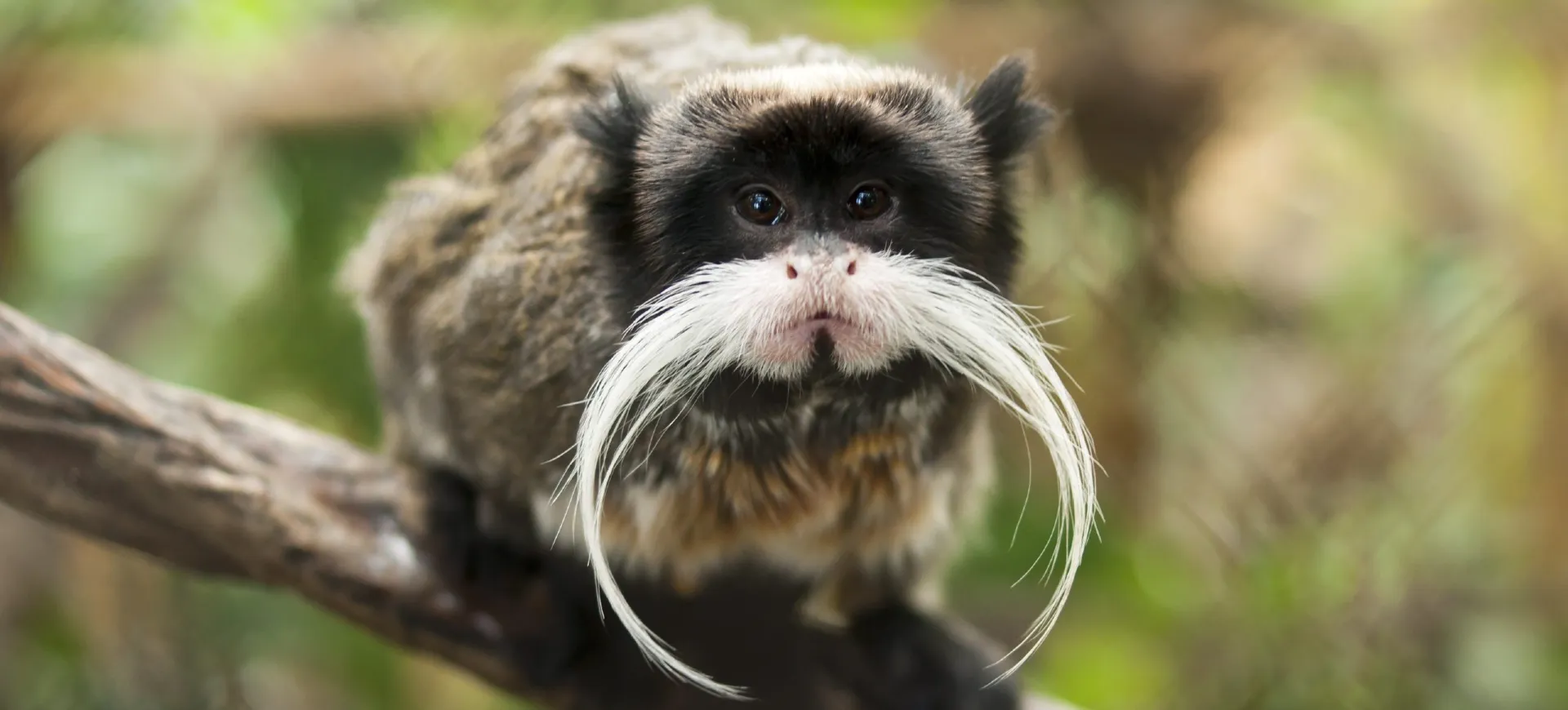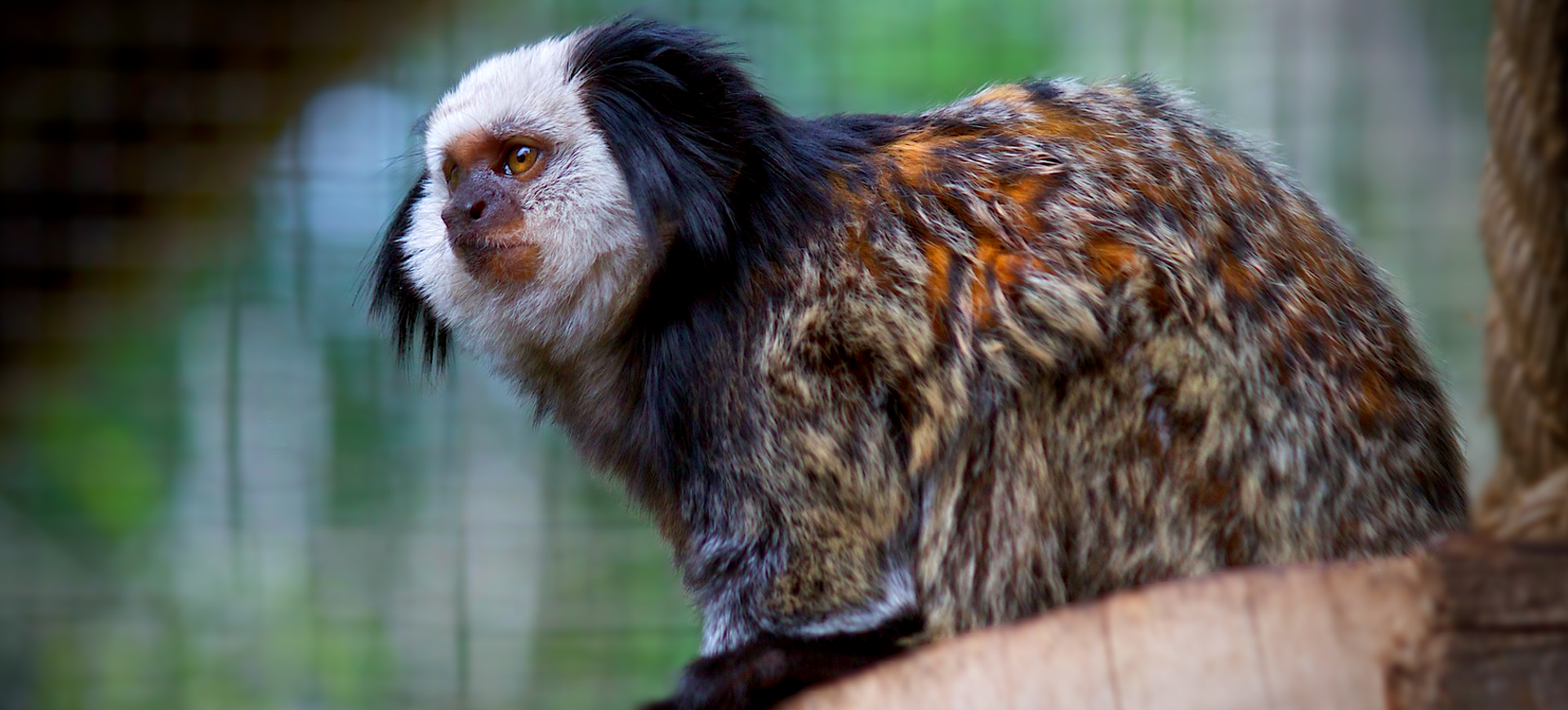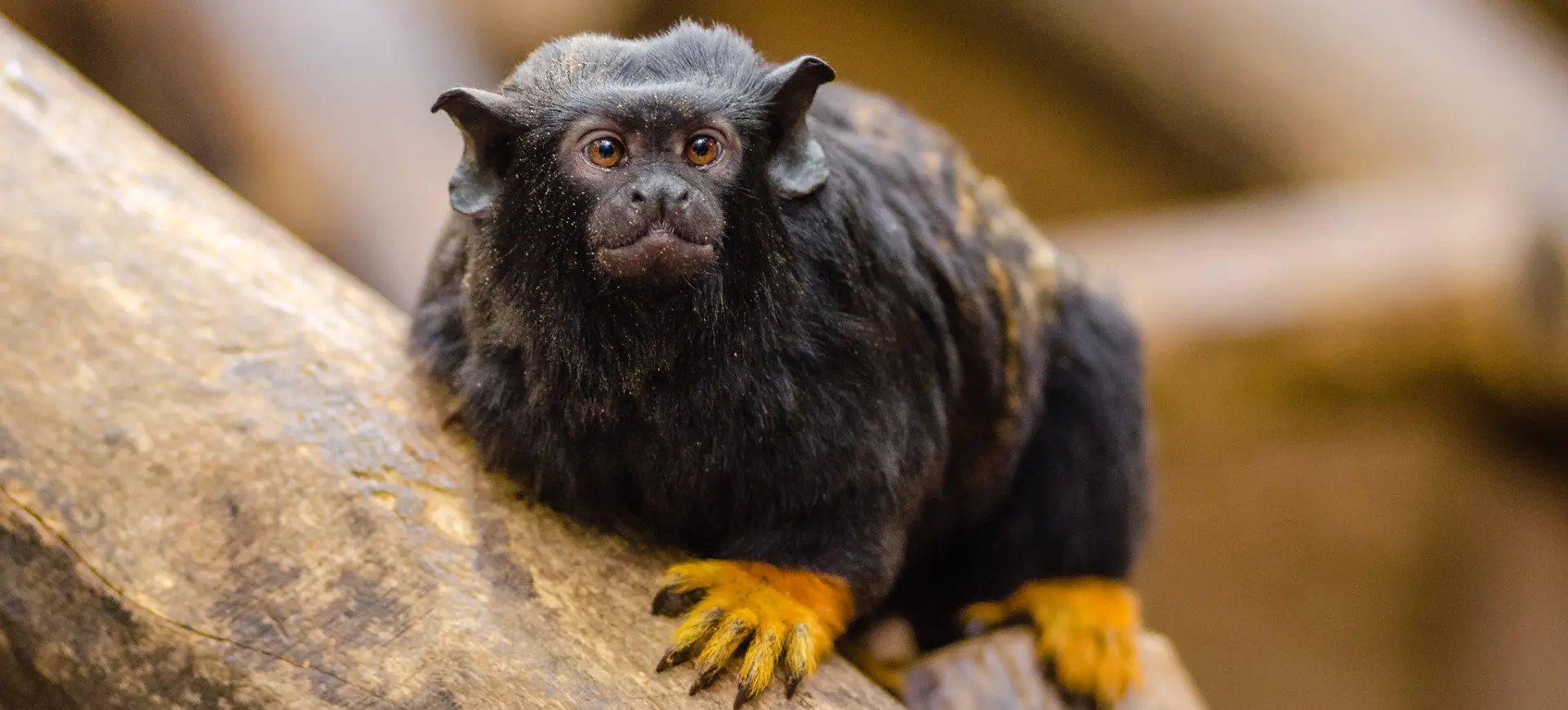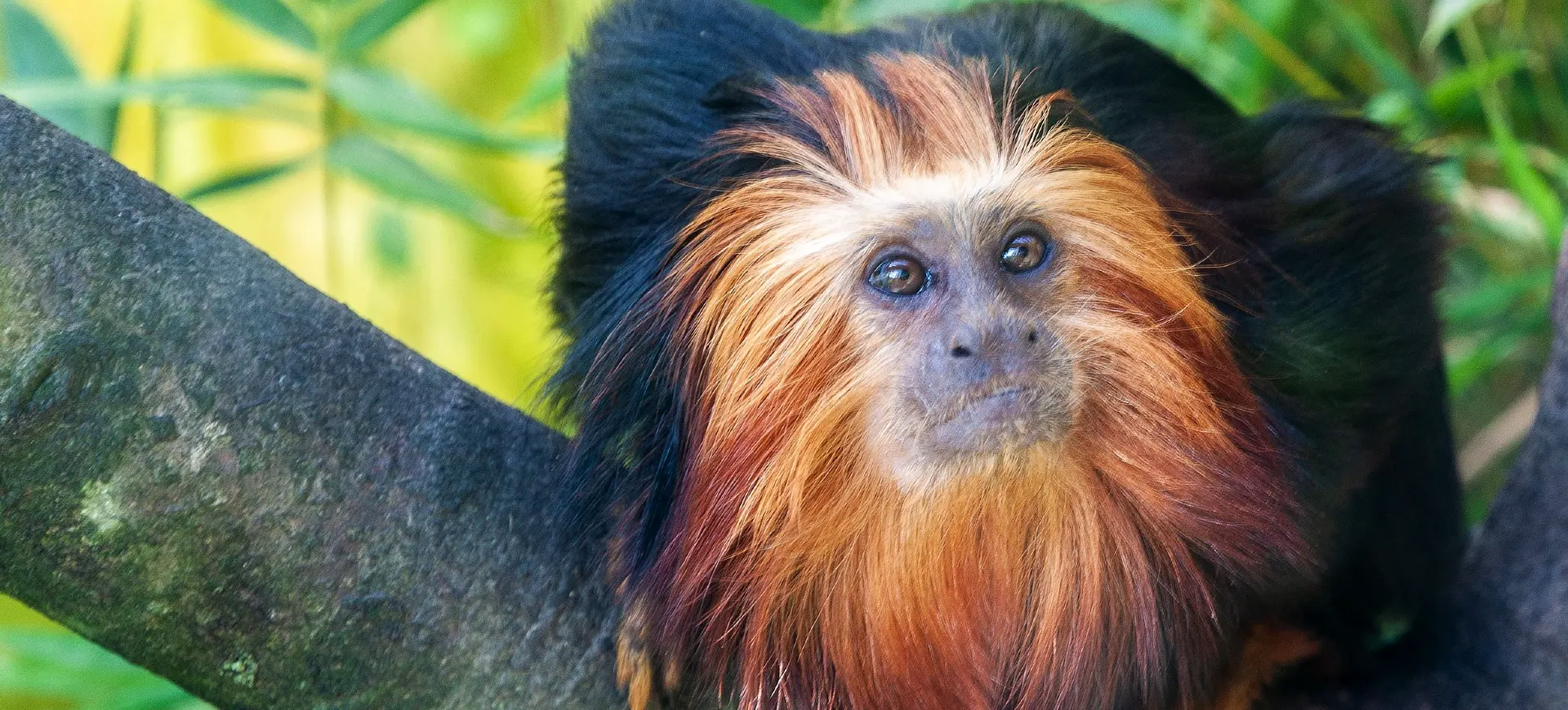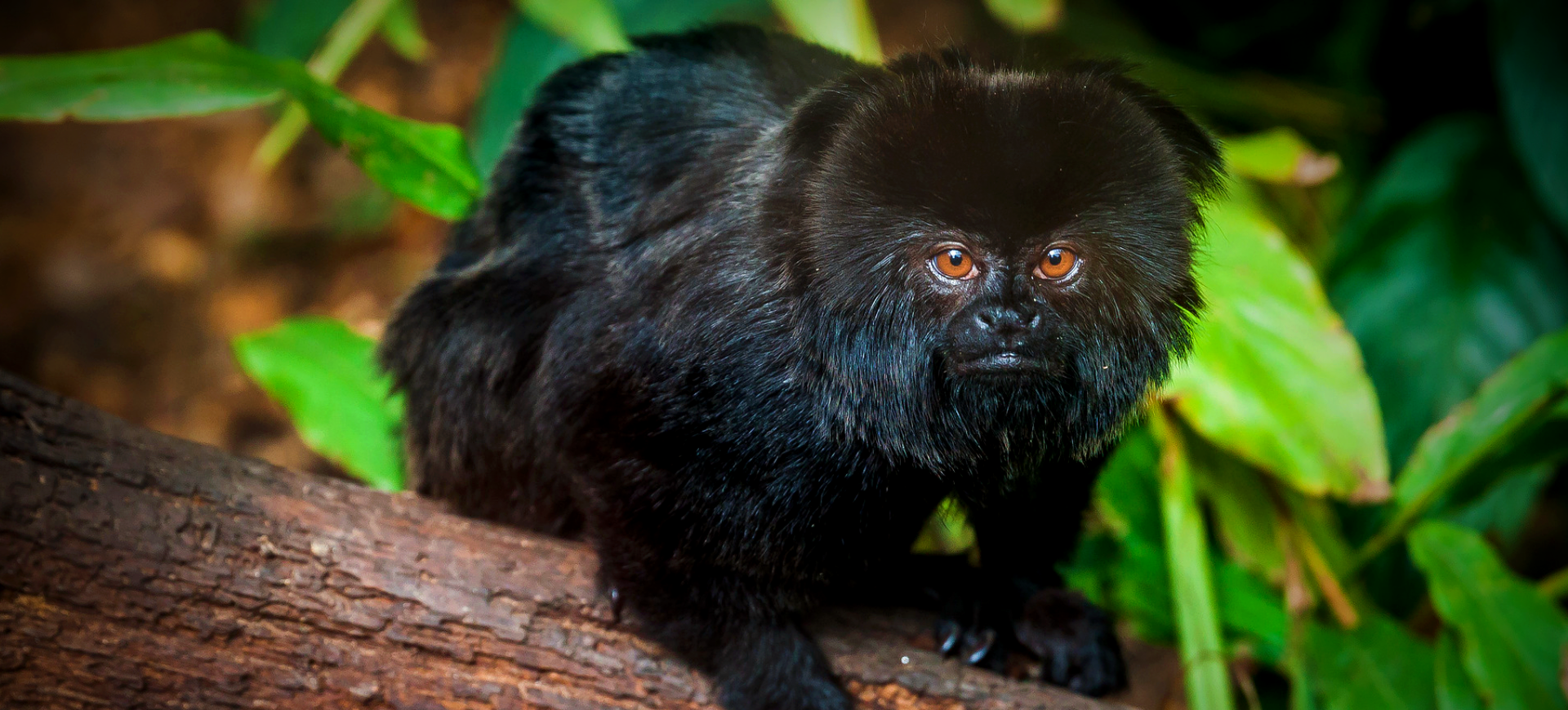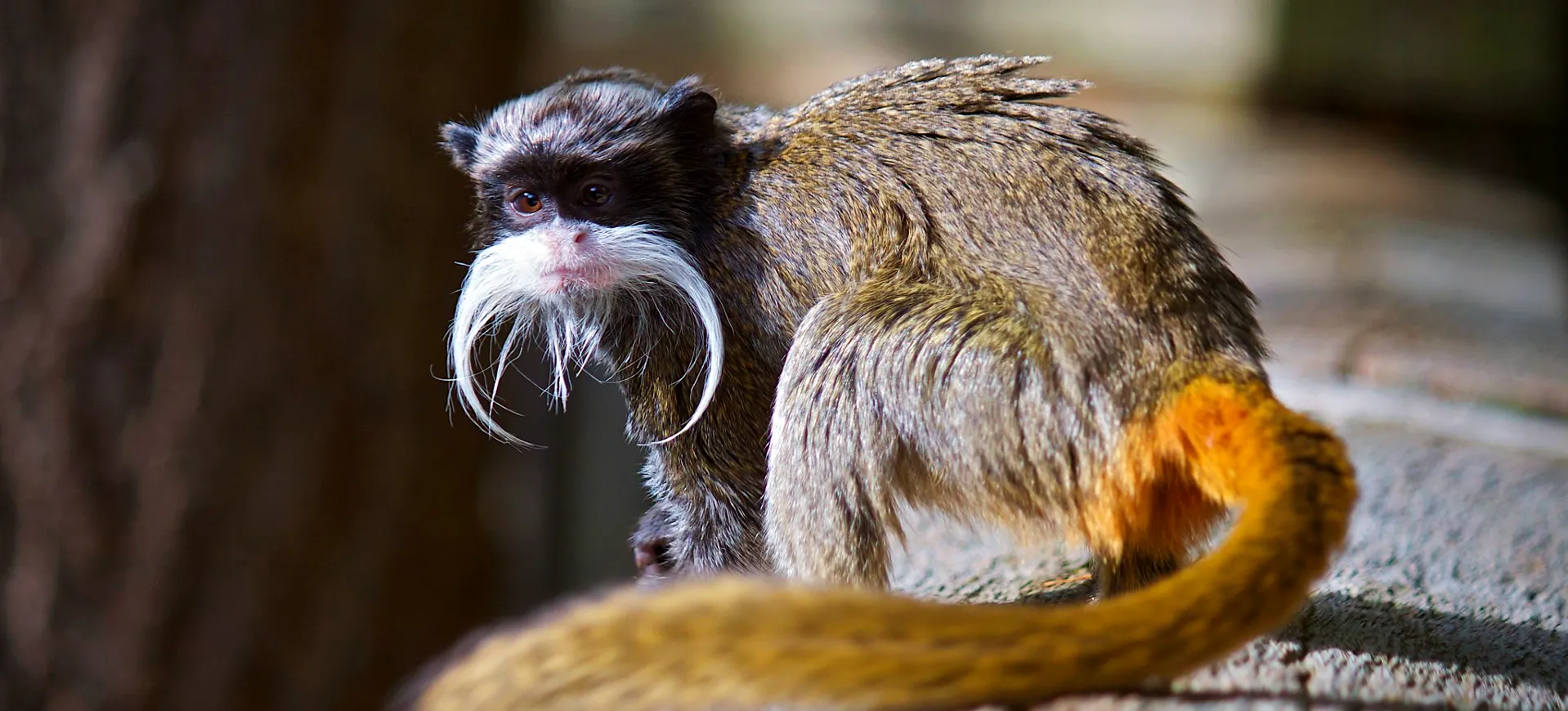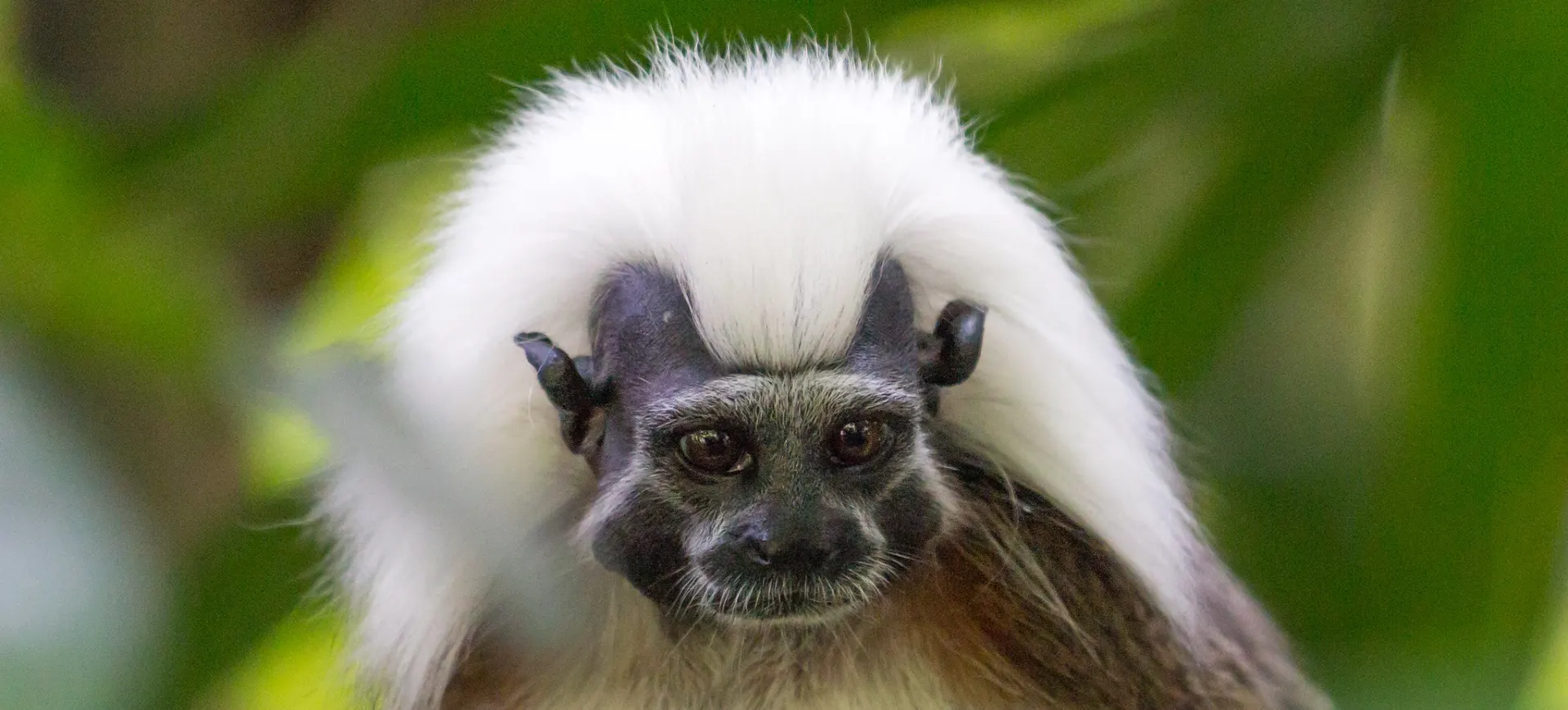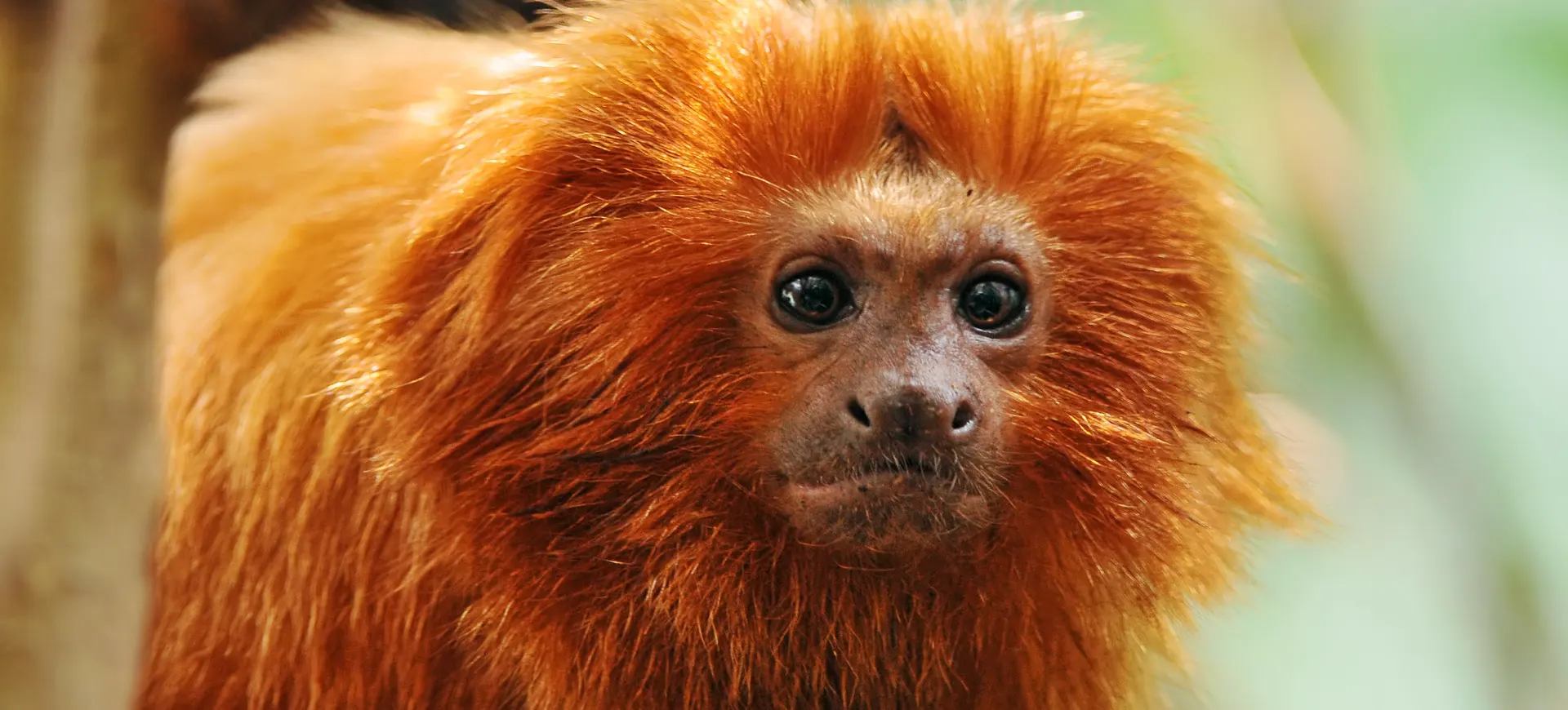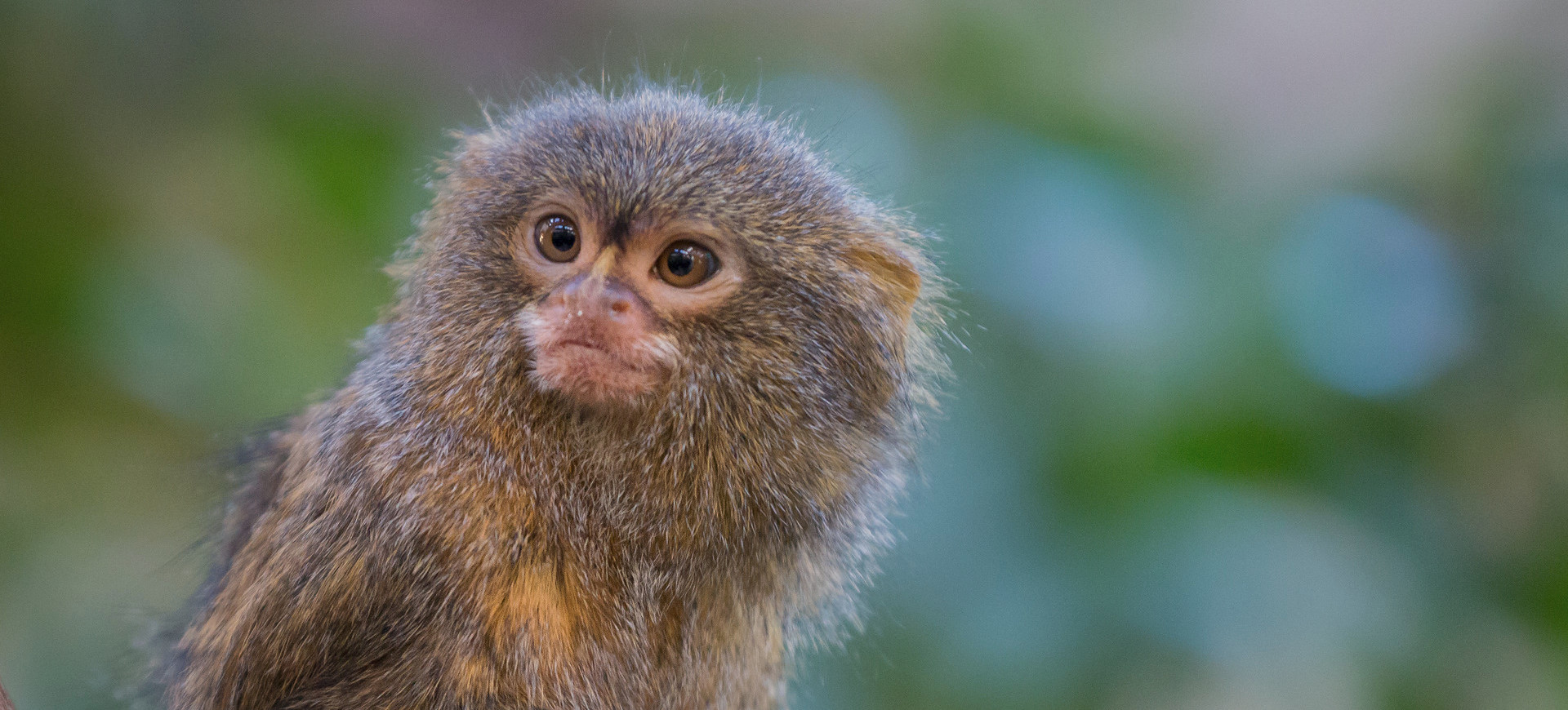Overview
The Pied Tamarin, also known as the Bare-faced Tamarin, is a small primate predominantly found in the Brazilian Amazon. This distinctive creature is characterized by its two-toned fur, which gives it the moniker “Pied.” The upper half of its body, including its face, is predominantly hairless and colored black, while its lower half is coated with golden fur. The Pied Tamarin is renowned for its white, almost frost-like hair, which covers the lower part of its body, giving it a striking visual contrast to its largely bald, dark upper body.
While it’s small in size, the Pied Tamarin is mighty in personality. It is an arboreal creature that spends most of its time in the forest canopy. The agility and quickness of these creatures are truly awe-inspiring. They move swiftly and efficiently between branches, showing their excellent climbing abilities. Despite their size, they are fierce defenders of their territory and are known to engage in violent disputes with other tamarins.
From a behavioral perspective, Pied Tamarins are social animals living in groups ranging from 2 to 15 members. They are primarily diurnal, meaning they are most active during the day. Individual communication involves a complex mix of vocal, visual, and olfactory signals. Distress calls, aggressive chatters, and scent marking are common within the group dynamic.
Taxonomy
Kingdom
Phylum
Class
Order
Family
Genus
Species
Type
Physical Description:
Pied Tamarins are small in size, with distinctive two-toned coloring. They possess black skin on the upper half of their bodies and golden fur on the lower half. The stark contrast is particularly evident on the face, where the furless black skin is juxtaposed against the white fur around the neck. This contrasting pattern is particularly pronounced in adult tamarins and is less so in younger ones. Pied Tamarins have relatively long, non-prehensile tails, often longer than their bodies, which are used for balance when navigating the tree canopies.
These tamarins are endowed with small, sharp claws instead of the flat nails seen in many other primates. These claws aid them in their arboreal life, allowing them to easily grasp and climb tree trunks and branches. The creatures also have forward-facing eyes that provide excellent depth perception, a necessary adaptation for an animal that leaps from branch to branch.

Lifespan: Wild: ~15 years || Captivity: ~20 years

Weight: Male: 1.1 lbs (0.5 kg) || Female: 1.1 lbs (0.5 kg)

Length: Male: 8.6 inches (22 cm) || Female: 8.6 inches (22 cm)

Height: Male: 9.8 in (25 cm) || Female: 9.5 in (24 cm)

Top Speed: 24 mph (38.6 km/h)
Characteristic:
Native Habitat:
The Pied Tamarin is native to the Brazilian Amazon, particularly the rainforests around Manaus. It thrives in the canopy of these rainforests, using the abundance of food and the protection from predators that the treetops offer. Pied Tamarins prefer older, taller trees where the branches and trunks produce the gums and saps they feed on.
While rainforests are their preferred habitats, they have adapted to various environments due to habitat destruction. They are increasingly found in secondary forests, degraded forests, and even urban areas. The adaptability of the Pied Tamarin to these less-than-ideal habitats is a testament to its resilience but also highlights the pressing issue of their disappearing natural habitats.
Climate Zones:
Biomes:
WWF Biomes:
Biogeographical Realms:
Continents:
Countries:
Diet:
Diet & Feeding Habits:
Pied Tamarins are omnivores with a preference for an insectivorous diet. Their food is typically a variety of insects, although they also eat fruits and plant exudates such as gums and saps. The consumption of these sticky substances necessitates the tamarin’s lower incisors and canine teeth to be elongated, enabling them to gnaw into tree bark. Pied Tamarins have been observed using their sharp, elongated teeth to make holes in tree trunks and branches to access the gum inside.
Even though insects and plant exudates form a significant part of their diet, Pied Tamarins have a broad diet and are opportunistic feeders. If available, they will also consume birds, bird eggs, flowers, nectar, and other small vertebrates. This varied diet helps them survive in the ever-changing environment of the Amazon rainforest.
Mating Behavior:
Mating Description:
Pied Tamarins have a complex mating system characterized by a polyandrous structure in which one female mates with multiple males. The female is typically the dominant individual in the group and is the only one to breed, while all males assist in raising the offspring. This communal care strategy significantly improves the survival rate of infants.
Pied Tamarins do not have a specific breeding season and can mate throughout the year. After mating, the female will give birth to typically two offspring after a gestation period of about 140-170 days. This is quite an investment for the female, as the combined weight of the offspring can be up to 20% of her body weight.
Reproduction Season:
Birth Type:
Pregnancy Duration:
Female Name:
Male Name:
Baby Name:
Social Structure Description:
Pied Tamarins are highly social creatures, living in groups of 2 to 15 individuals. These groups typically consist of one dominant breeding female, multiple males, and their offspring. The males in the group are responsible for caring for the infants, carrying them on their backs and providing food.
The social structure of Pied Tamarins is quite complex and involves a variety of social behaviors, including grooming, play, conflict, and reconciliation. Grooming is a key social activity and serves multiple functions, including hygiene, social bonding, and conflict resolution. Aggressive behaviors are also observed within the group, usually related to feeding or mating disputes.
Groups:
Conservation Status:
Population Trend:
The Pied Tamarin population in the wild is believed to be between 1,000 and 2,500 individuals. This number is declining due to the rapid urbanization of its habitat around Manaus, Brazil. Due to this urban expansion, the fragmentation of their habitat has led to smaller and isolated populations, which are less genetically diverse and thus more susceptible to disease and inbreeding.
Despite the rapid urbanization, some populations of Pied Tamarins have managed to survive in small patches of forest within the city. These urban populations are important for the conservation of the species but are also at higher risk due to conflicts with humans and domestic animals. The conservation of these urban populations is challenging but necessary for the survival of this species.
Population Threats:
Pied Tamarin’s biggest threat is habitat loss due to rapid urban expansion and deforestation. As the city of Manaus continues to grow, the forests that the Pied Tamarins depend on are being destroyed, leaving them with smaller and increasingly fragmented habitats. These smaller habitats cannot support large populations, leading to decreased numbers and increased inbreeding.
Additionally, Pied Tamarins are often victims of the pet trade. Despite the legal protections, Pied Tamarins are captured and sold as pets, contributing to the declining wild population. Diseases transmitted by domestic animals also pose a significant risk, especially to those populations living in urban areas.
Conservation Efforts:
Conservation efforts for the Pied Tamarin are centered on preserving its remaining habitat and preventing further urban expansion into its territory. The creation of urban reserves and parks within the city of Manaus has provided some safe habitats for these tamarins. Educational programs are also being implemented to raise awareness about the Pied Tamarin’s plight and discourage their capture of the pet trade.
Various conservation organizations are working on in-situ and ex-situ conservation projects. In-situ projects aim to protect and conserve Pied Tamarins in their natural habitat, while ex-situ projects focus on breeding and reintroducing captive tamarins into the wild. These combined efforts are crucial in ensuring the survival of this species.
Additional Resources:
Fun Facts
- Pied Tamarins are one of the smallest primates in the world.
- The combined weight of a Pied Tamarin’s offspring can be up to 20% of her body weight.
- Pied Tamarins are polyandrous, meaning that one female mates with multiple males.
- These tamarins are highly territorial and will engage in violent disputes with other tamarins.
- The sharp claws of a Pied Tamarin help it to cling and climb trees with ease.
- The Pied Tamarin has a very limited geographic distribution, endemic to a small area in the Brazilian Amazon.
- Despite being an endangered species, Pied Tamarins have managed to survive in small patches of forest within the city of Manaus.
- They have a complex social structure with a variety of social behaviors, including grooming, play, conflict, and reconciliation.
- Pied Tamarins don’t have a specific breeding season and can mate throughout the year.
- They are omnivores with a preference for an insectivorous diet, feeding on a variety of insects, fruits, and plant exudates such as gums and saps.






